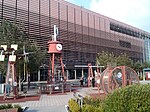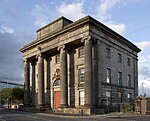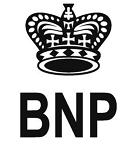Millennium Point, Birmingham

Millennium Point is a multi-use meeting and conference venue, public building and charitable trust in Birmingham, England, situated in the developing Eastside of the city centre. The complex contains multiple event spaces, including a 354-seat auditorium, formerly Giant Screen IMAX cinema; Birmingham Science Museum, Royal Birmingham Conservatoire's School of Acting and Birmingham City University's Faculty of Computing, Engineering and The Built Environment, part of Birmingham Metropolitan College. The building is owned by the Millennium Point Charitable Trust with a percentage of profits from the organisation's commercial activity being invested into projects, events and initiatives which support science, technology, engineering and maths (STEM) and education in the West Midlands. The Millennium Point Charitable Trust has contributed on average more than £5 million annually to the region through their charitable work.The complex was officially opened by Queen Elizabeth II on 2 July 2002, although it had been in use since the previous year. In 2021, Millennium Point was announced as one of the first eight mass-vaccination centres, and the first in the West Midlands, as part of the COVID-19 Vaccination programme in the United Kingdom. Millennium Point's main Atrium and Level 2 spaces remained in use as a vaccination centre until 31st August that same year.
Excerpt from the Wikipedia article Millennium Point, Birmingham (License: CC BY-SA 3.0, Authors, Images).Millennium Point, Birmingham
Belmont Row, Birmingham Digbeth
Geographical coordinates (GPS) Address Nearby Places Show on map
Geographical coordinates (GPS)
| Latitude | Longitude |
|---|---|
| N 52.482908333333 ° | E -1.8860583333333 ° |
Address
Birmingham City University Central Campus
Belmont Row
B4 7RQ Birmingham, Digbeth
England, United Kingdom
Open on Google Maps









